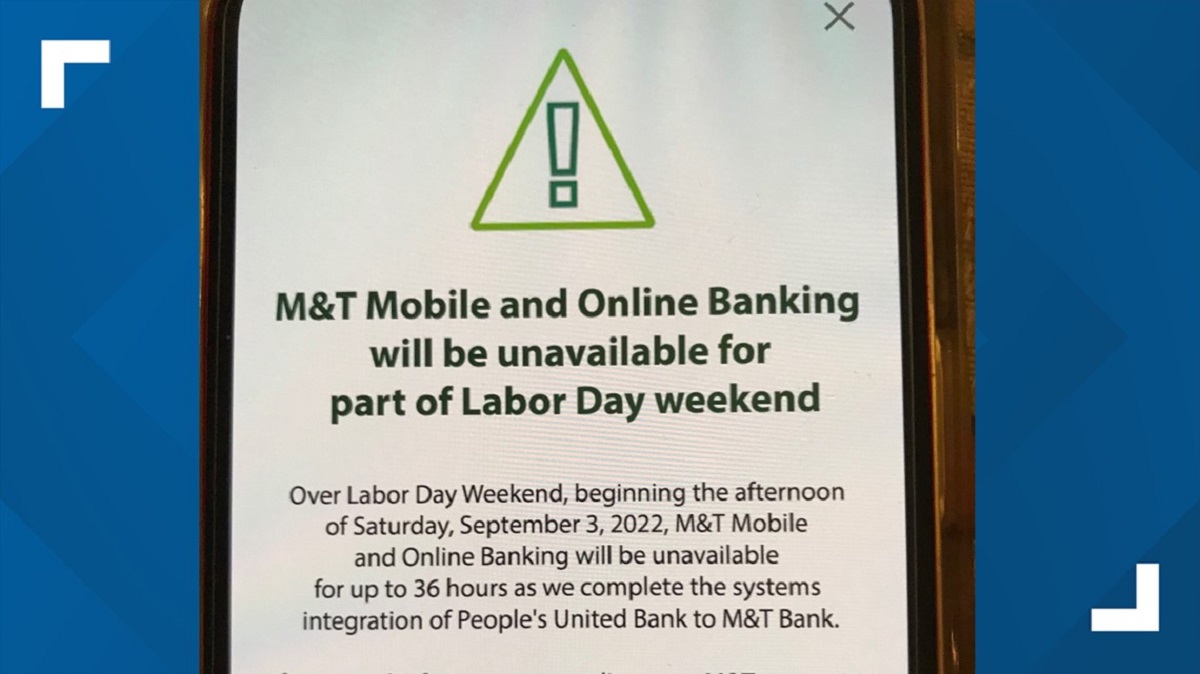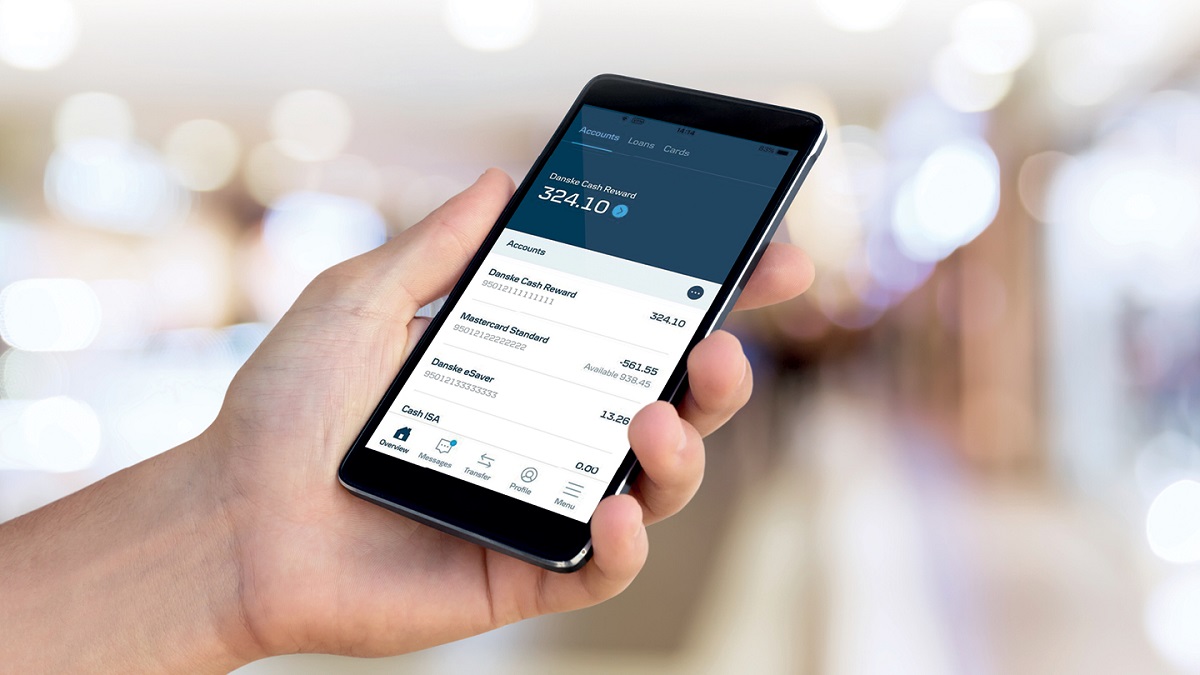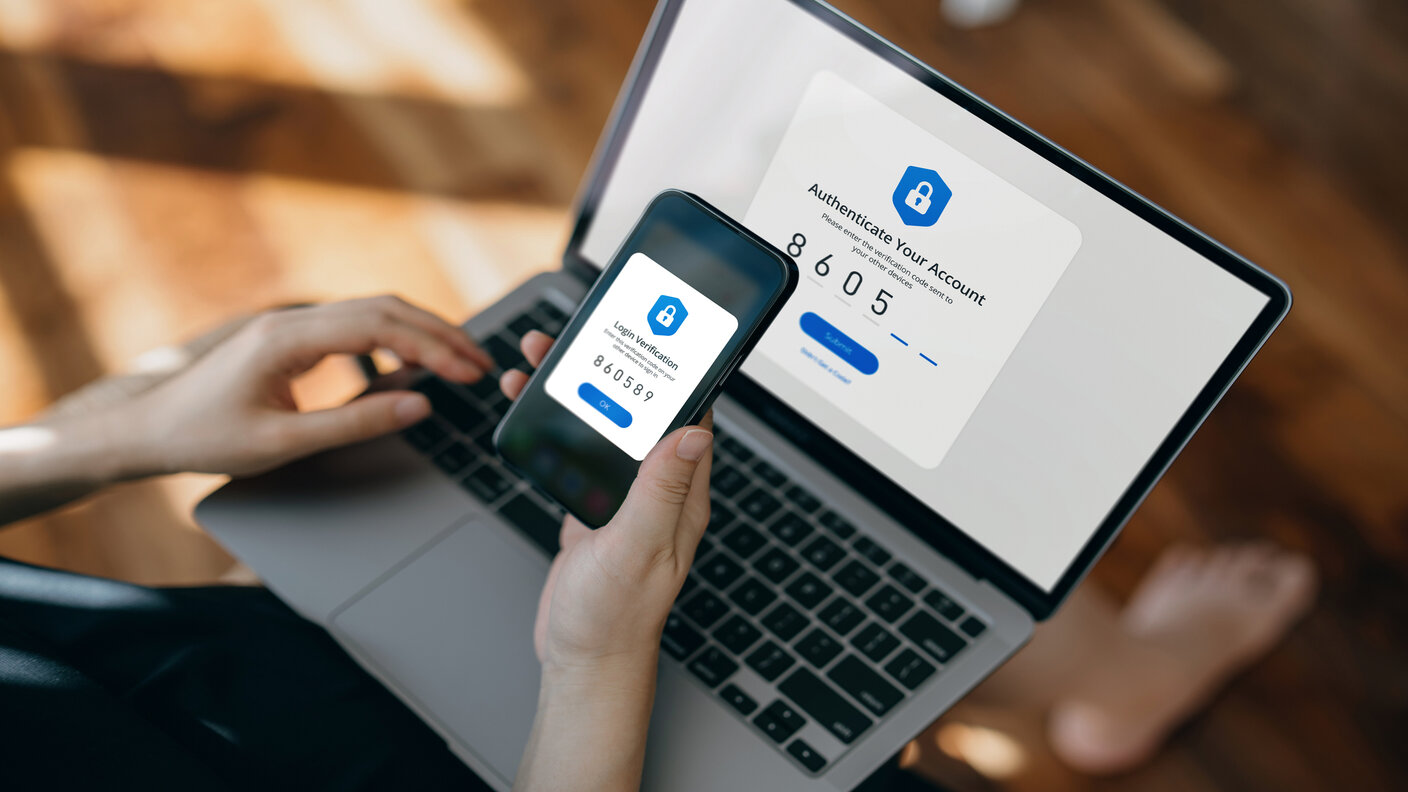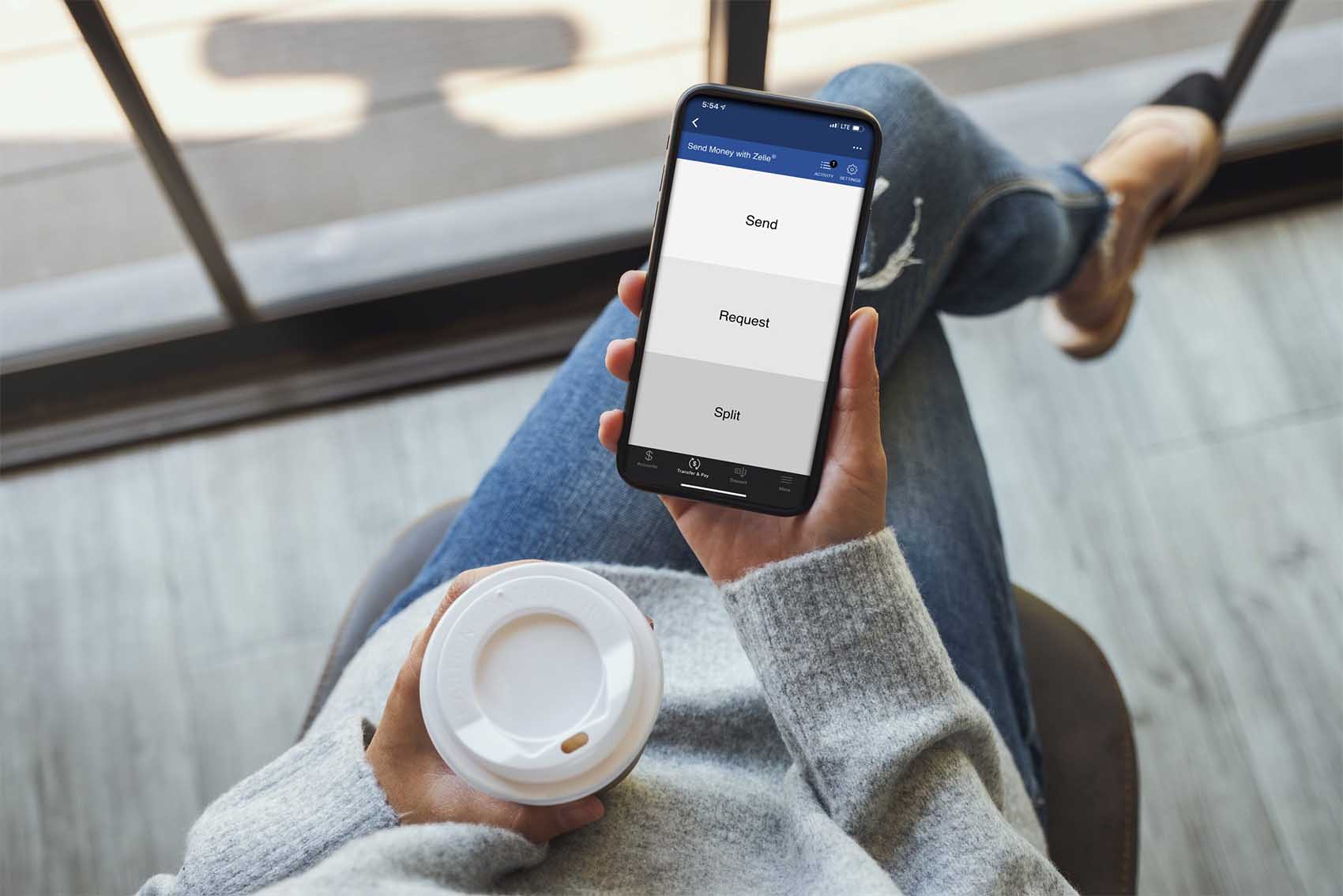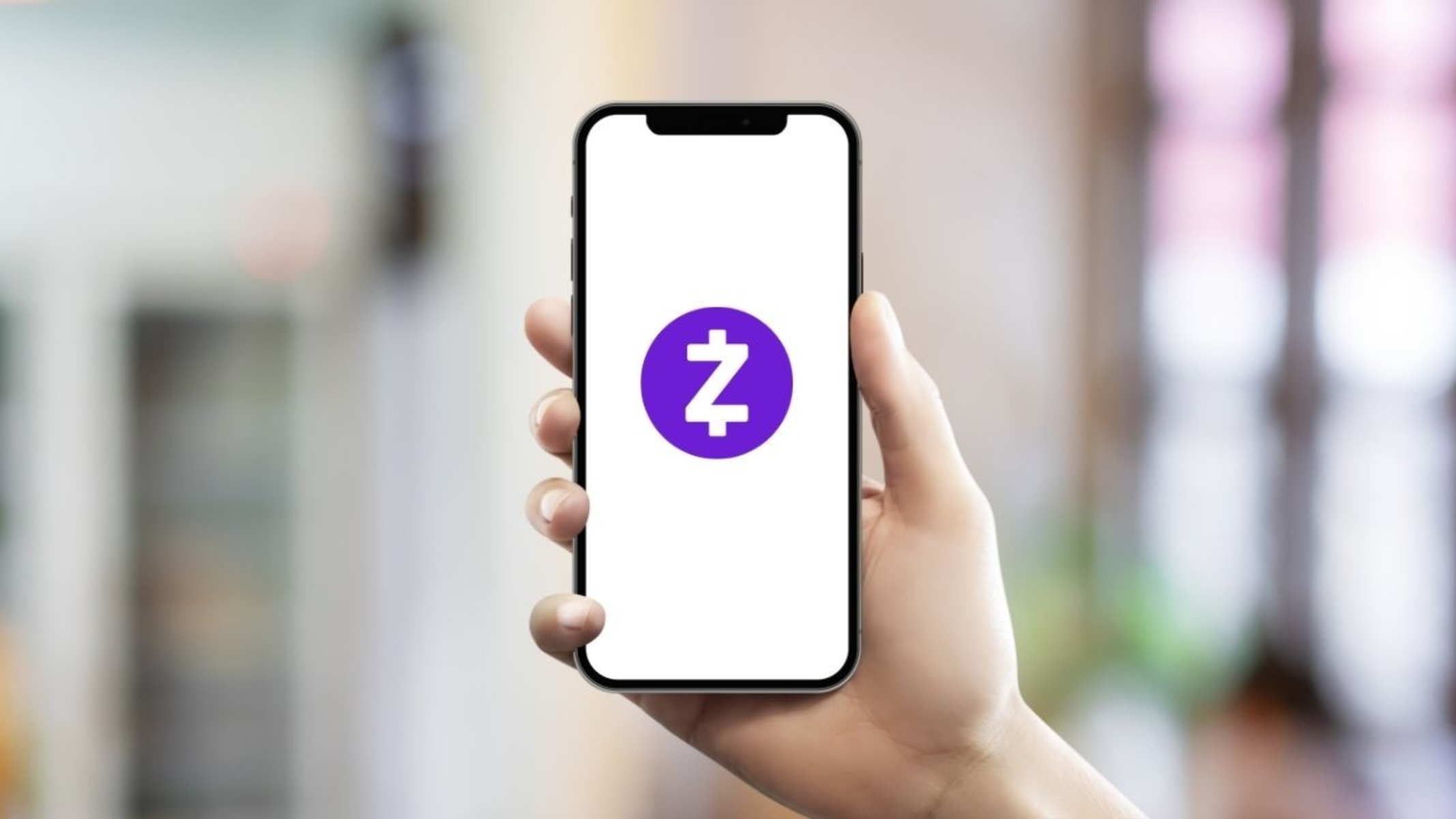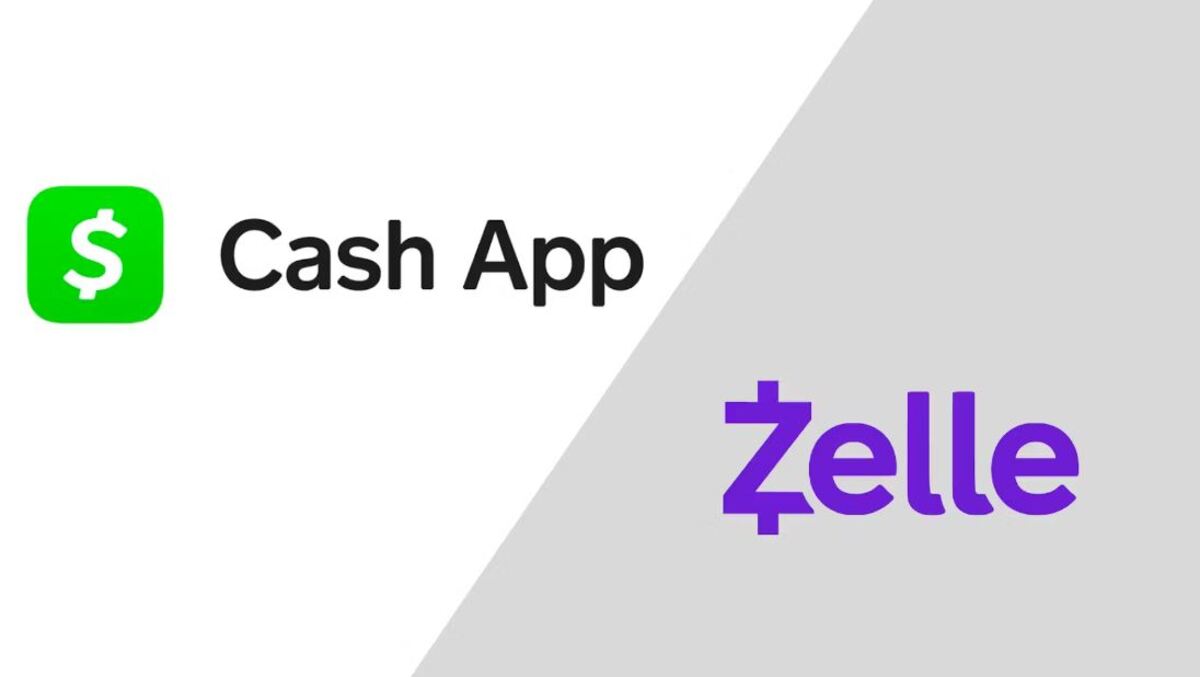Introduction
Welcome to the world of mobile banking, where convenience and accessibility are just a tap away. With the rise of smartphones and their ever-evolving capabilities, traditional banking methods have been revolutionized. Gone are the days of waiting in long queues and adhering to strict banking hours. Mobile banking allows you to manage your finances on the go, anytime and anywhere.
As the name suggests, mobile banking refers to the use of a mobile device, such as a smartphone or tablet, to conduct various banking activities. From checking account balances to transferring funds and paying bills, the power to control your financial matters is now nestled comfortably in the palm of your hand.
Mobile banking offers a plethora of benefits that make modern-day banking more efficient and streamlined. Whether you’re a tech-savvy individual or someone who simply values convenience, mobile banking has something to offer for everyone.
In this article, we will explore the many advantages of mobile banking, guide you through the setup process, familiarize you with the various features available, and provide essential tips for using mobile banking securely. By the end, you’ll have a comprehensive understanding of the incredible convenience and functionality mobile banking brings to your financial life.
So, let’s dive in and discover how you can harness the power of mobile banking to take control of your finances like never before.
Benefits of Mobile Banking
Mobile banking offers a wide range of benefits that make it a preferred choice for managing your finances. Here are some key advantages of using mobile banking:
- Convenience: One of the biggest advantages of mobile banking is the convenience it offers. With a smartphone or tablet, you can access your bank accounts and perform transactions from anywhere and at any time. No more rushing to the bank before closing hours or waiting in long queues. Mobile banking puts the power to manage your finances right at your fingertips.
- Accessibility: Mobile banking allows you to access your accounts and perform transactions 24/7, irrespective of your location. Whether you’re on vacation, at work, or simply relaxing at home, as long as you have an internet connection, you can easily check your balances, transfer funds, and make payments.
- Real-time updates: Mobile banking provides real-time updates on your account transactions. You can instantly see when money is deposited or withdrawn from your account, ensuring that you have an accurate and up-to-date view of your finances. This helps you stay on top of your spending and budgeting goals.
- Cost savings: Mobile banking eliminates the need for paper statements, postage, and in-person visits to the bank, resulting in cost savings for both the banks and the customers. Additionally, many banks offer perks such as reduced or waived fees for certain transactions conducted through mobile banking.
- Enhanced security: Mobile banking utilizes advanced security measures to protect your financial information. Features like biometric authentication (fingerprint or facial recognition) and encrypted connections ensure that your data remains secure. In case of a lost or stolen device, you can also remotely block access to your mobile banking app.
- Quick and easy transactions: With mobile banking, conducting transactions has never been easier. Whether you need to transfer money to another account, pay bills, or even send money to friends or family, it can all be done quickly and effortlessly through a few taps on your mobile device. No more writing checks or visiting multiple payment centers.
- Personalized financial insights: Many mobile banking apps come equipped with features that provide personalized financial insights, including spending patterns, budgeting tools, and alerts for upcoming bills or payment due dates. These insights help you make informed decisions and stay on track with your financial goals.
These are just a few of the benefits offered by mobile banking. In the next section, we will guide you through the process of setting up mobile banking on your device.
Setting Up Mobile Banking
Setting up mobile banking is a straightforward process that typically involves the following steps:
- Choose a banking institution: Start by selecting a reputable bank or financial institution that offers mobile banking services. Research different banks and compare their features, fees, and user reviews to find the one that best fits your needs.
- Download the mobile banking app: Once you have chosen a bank, visit the app store for your mobile device (such as Google Play Store for Android or App Store for iOS) and search for the official mobile banking app of your chosen bank. Download and install the app on your device.
- Register your account: Open the mobile banking app and follow the registration process. You will typically be asked to provide your personal information, such as your name, address, and identification details. You may also need to verify your identity through a one-time password (OTP) sent to your registered mobile number.
- Create a secure login: Set up a strong, unique password and, if available, enable additional security measures such as fingerprint or facial recognition. This helps ensure that only you can access your mobile banking account.
- Link your accounts: Once you have set up your login credentials, you will need to link your bank accounts to the mobile banking app. This usually involves entering your account number and verifying your ownership through additional security steps.
- Explore the features: After successfully setting up mobile banking, take some time to explore the various features and functionalities available. Familiarize yourself with account balances, transaction history, bill payment options, and any other services your bank offers through the app.
- Set up notifications: Configure the mobile banking app to receive notifications for important account activities, such as deposits, withdrawals, and payment reminders. This ensures that you stay informed about any transactions happening in your account.
- Protect your device: It is crucial to keep your device secure to protect your mobile banking information. Set a strong passcode for your device, keep your operating system and apps updated, and be cautious while downloading third-party apps or accessing banking information on public Wi-Fi networks.
Always refer to the specific instructions provided by your bank or financial institution to ensure a smooth setup process. Once you have successfully set up mobile banking, you can start enjoying the convenience and functionality it brings to your financial management.
Features of Mobile Banking
Mobile banking offers a wide range of features that cater to various financial needs. Here are some common features you can expect when using mobile banking:
- Account Information: Mobile banking provides easy access to your account information, including balances, transactions, and statements. You can quickly check how much money is in your account or review your recent transactions without the need to visit a physical branch.
- Transfer Funds: With mobile banking, you can transfer money between your own accounts or to other individuals seamlessly. Whether you need to send money to a family member, split a bill with a friend, or move funds between your savings and checking account, the transfer feature allows you to do it conveniently from your mobile device.
- Bill Payment: Mobile banking makes bill payment hassle-free. You can add billers, schedule recurring payments, and even set reminders for upcoming due dates. It eliminates the need for writing checks or visiting multiple payment centers, as you can settle your bills with just a few taps on your mobile device.
- Mobile Deposits: Many mobile banking apps offer the ability to deposit checks using your mobile device’s camera. Simply endorse the check, take a picture of the front and back, and submit it through the app. This feature saves you time and effort by avoiding trips to the bank or ATM.
- Card Management: Mobile banking enables you to manage your debit and credit cards conveniently. You can view card details, check available credit, activate or deactivate cards, and even report lost or stolen cards. Some apps also offer the option to set spending limits or receive instant notifications for card transactions.
- Alerts and Notifications: Stay informed about your account activities with mobile banking alerts and notifications. You can receive alerts for low balances, large transactions, account updates, and upcoming payment due dates. These notifications help you stay on top of your finances and avoid any unwanted surprises.
- Budgeting Tools: Many mobile banking apps provide budgeting tools and spending analysis features. You can categorize your expenses, set budget limits, and track your spending patterns over time. These tools offer valuable insights into your financial habits and help you make informed decisions.
- Customer Support: Mobile banking apps often provide access to customer support services, including chat support or phone assistance, right from within the app. If you have any queries or require assistance with your account, you can easily connect with a representative without having to visit a bank branch.
Remember that the available features may vary depending on the bank and the mobile banking app. It is advisable to explore and familiarize yourself with all the features offered by your specific mobile banking service to maximize its benefits.
Security Measures for Mobile Banking
Mobile banking prioritizes the security and protection of your financial information. Here are some key security measures to keep in mind when using mobile banking:
- Authentication and Password Security: Choose a strong, unique password for your mobile banking app and avoid using common phrases or easily guessable information. Many apps also offer additional authentication methods such as biometric recognition (fingerprint or facial recognition) or two-factor authentication (OTP sent to your registered mobile number).
- Secure Networks: When accessing your mobile banking app, make sure you are connected to a secure network. Avoid using public Wi-Fi networks, as they may be vulnerable to hackers who can intercept your data. Stick to trusted networks or use a virtual private network (VPN) for added security.
- App Updates: Keep your mobile banking app updated to ensure you have the latest security features and bug fixes. Developers regularly release updates to address any vulnerabilities or security loopholes, so enable automatic app updates on your device or manually check for updates regularly.
- Device Security: Protect your mobile device with a strong passcode or pattern lock. Enable biometric authentication (fingerprint or facial recognition) if available. In case of loss or theft, remotely lock or erase your device to prevent unauthorized access to your mobile banking app and data.
- Use Official Apps: Only download and use the official mobile banking app provided by your bank or financial institution. Avoid downloading apps from third-party sources, as they may contain malicious software or attempt to steal your personal and financial information.
- Be Mindful of Phishing Attacks: Be cautious of emails, text messages, or phone calls asking for your banking information. Financial institutions will never ask for sensitive information unsolicited. Avoid clicking on suspicious links or providing personal details to unverified sources.
- Secure Banking Zones: If you need to access your mobile banking app in a public place, ensure that you are in a secure and private environment. Shield your screen from prying eyes and be aware of your surroundings to protect your login credentials and account information.
- Regularly Monitor Your Accounts: Keep a close eye on your account activity and regularly review your transaction history. If you notice any suspicious transactions or unauthorized access, report it to your bank immediately.
- Logout and Securely Close the App: After completing your mobile banking tasks, always log out of the app and securely close it. This helps ensure that your session is terminated, preventing unauthorized access in case your device is lost or stolen.
- Report Lost or Stolen Devices: If your mobile device containing the mobile banking app is lost or stolen, inform your bank immediately. They can take the necessary steps to secure your account and prevent any unauthorized access or transactions.
By following these security measures and staying vigilant, you can enjoy the convenience of mobile banking while keeping your financial information safe and secure.
Using Mobile Banking for Basic Transactions
Mobile banking provides a convenient way to perform various basic financial transactions right from the palm of your hand. Here’s how you can use mobile banking for common transactions:
- Checking Account Balances: Open your mobile banking app and log in using your secure credentials. Once logged in, you can view the balances of all your linked accounts. Tap on your checking account to see the available balance and any pending transactions.
- Reviewing Transaction History: Within your mobile banking app, you can access your transaction history to review past transactions. Typically, you can filter the transactions by date range or specific criteria to find the information you need.
- Transferring Funds: To transfer funds between your own accounts, select the “Transfer” or “Move Money” option in your mobile banking app. Choose the accounts involved in the transfer, enter the transfer amount, and confirm the transaction. Some apps also allow you to make transfers to other individuals or external bank accounts.
- Deposit Checks: Many mobile banking apps offer a mobile deposit feature, allowing you to deposit checks using your smartphone camera. Select the “Deposit” or “Mobile Deposit” option in the app and follow the instructions to capture images of the front and back of the check. After verification, the funds will be credited to your account.
- Paying Bills: To pay bills through your mobile banking app, navigate to the “Bill Pay” or “Payments” section. Add the biller or payee details, enter the payment amount, and schedule the payment for the desired date. Some apps offer the option to set up recurring payments for regular bills.
- Transferring Money to Other Accounts: Most mobile banking apps allow you to transfer money to other accounts outside of your own bank. Select the “Transfer” or “Send Money” option and enter the recipient’s account details, such as account number and bank routing number. Follow the prompts to confirm the transfer.
- Requesting Money: Some mobile banking apps offer a feature to request money from others. This is particularly useful when you need to split expenses with friends or family. Enter the requested amount and the email or phone number of the payer, and the app will send a notification with payment details.
- Setting Up Account Alerts: Take advantage of the account alert settings in your mobile banking app. You can set up notifications for low balances, large transactions, upcoming bill due dates, and other important account activities. These alerts help you stay informed about your financial transactions.
Each mobile banking app may have slight variations in navigation and terminology, but the basic functionality remains the same. Familiarize yourself with the options available in your specific app and explore these features to manage your basic transactions efficiently.
Transferring Money with Mobile Banking
Mobile banking provides a convenient and secure way to transfer money between accounts. Whether it’s transferring funds to another one of your own accounts, sending money to family or friends, or making payments to external accounts, mobile banking makes the process quick and hassle-free. Here’s how you can transfer money using mobile banking:
- Transferring within Your Own Accounts: To transfer money between your own accounts, open your mobile banking app and log in. Locate the “Transfer” or “Move Money” option in the app’s menu. Choose the accounts involved in the transfer, enter the transfer amount, and confirm the transaction. The funds will be transferred instantly or within a few business days, depending on the type of accounts involved and the bank’s policies.
- Sending Money to Other Individuals: Many mobile banking apps offer features to send money to individuals, even if they have accounts at different banks. Look for the “Send Money” or “Person-to-Person Payments” option in your app. Enter the recipient’s contact information, such as their email address or mobile number, and the transfer amount. The recipient will receive a notification with instructions to accept the transfer.
- External Transfers to Other Bank Accounts: If you need to transfer money to someone who has an account at a different bank, your mobile banking app may have an option for external transfers. Select the “Transfer” or “Send Money” feature, and choose the option to transfer funds to an external account. You will need to provide the recipient’s account details, such as the account number and bank routing number. Take care to enter the information accurately to ensure the smooth processing of the transaction.
- Recurring Transfers: If you have regular expenses or need to make repeated transfers, your mobile banking app may offer a recurring transfer feature. This allows you to set up automatic transfers at specified intervals, such as weekly or monthly. Set the transfer amount, frequency, and duration, and the app will handle the transfers on your behalf. This feature is useful for paying bills with fixed amounts or saving money regularly.
- International Transfers: Some mobile banking apps provide the ability to transfer money internationally. Check if your app offers this feature and follow the instructions provided. International transfers typically require additional information, such as the recipient’s bank’s SWIFT code or International Bank Account Number (IBAN). Be aware that international transfers may have associated fees and longer processing times.
- Confirming Transfers and Payment Details: Before confirming any transfer, double-check all the details entered, including the recipient’s account information and the transfer amount. Pay attention to any fees or charges associated with the transaction. Reviewing the transfer details ensures that the funds are being sent to the correct account and minimizes the risk of errors.
- Transaction History and Receipts: After completing a transfer, your mobile banking app will provide a transaction confirmation. Take note of the transaction reference number or receipt generated by the app. Additionally, you will be able to view the transfer in your transaction history for future reference. It’s a good practice to save any receipts or confirmation numbers in case you need to reference them later.
Mobile banking transforms the process of transferring money, allowing you to send funds quickly and securely. Make sure to explore and understand the specific transfer options and capabilities offered by your mobile banking app. With mobile banking, managing your finances and transferring money has never been easier.
Paying Bills with Mobile Banking
Mobile banking provides a convenient and efficient way to pay your bills. Instead of writing checks or visiting multiple biller websites, you can use your mobile banking app to make payments with just a few taps on your mobile device. Here’s how you can pay your bills using mobile banking:
- Add Billers: Start by adding your billers to your mobile banking app. Look for the “Bill Pay” or “Payments” option in the app’s menu. Select the option to add a new biller and enter the necessary information, such as the biller’s name, account number, and payment address. Some apps also offer the option to scan barcodes or QR codes on your bills for easier setup.
- Schedule Payments: Once you have added your billers, you can schedule payments within the mobile banking app. Select the biller you want to pay, enter the payment amount, and choose the payment date. You can opt for a one-time payment or set up recurring payments for bills that occur regularly, such as rent or utilities.
- Payment Options: Mobile banking apps provide various payment options. You can choose to pay bills using the balance from your checking account or select a different funding source, such as a credit card. Some apps even allow you to split payments between multiple accounts or payment methods if needed.
- Review and Confirm: Before finalizing the payment, review the details to ensure accuracy. Check the payment amount, biller information, and payment date. Once you are satisfied, confirm the payment. Your mobile banking app will process the payment according to your instructions.
- Payment Reminders: Mobile banking apps often offer the option to set up payment reminders. You can opt to receive notifications or emails before your bills are due, helping you stay organized and avoid late fees. The reminders can be customized to your preference, allowing you to choose how far in advance you want to be notified.
- View Payment History: In your mobile banking app, you will have access to your payment history. This allows you to keep track of your bill payment activity, including previous payments made and upcoming payments scheduled. You can also review any payment confirmations or receipts within the app.
- Manage Automatic Bill Payments: If you have recurring bills, you can set up automatic bill payments through your mobile banking app. This convenient feature eliminates the need to manually schedule payments each time. Ensure that you have sufficient funds in your account on the scheduled payment date to avoid any potential issues.
- Security and Fraud Protection: Mobile banking apps prioritize the security of your bill payment transactions. They utilize encryption and other security measures to protect your personal and financial information. Additionally, many apps offer the ability to set up alerts or notifications for bill payments, helping you detect and prevent any fraudulent activity.
Mobile banking simplifies the process of paying bills, allowing you to manage your financial obligations conveniently and securely. Explore the bill pay features in your mobile banking app and take advantage of this time-saving functionality.
Managing Accounts with Mobile Banking
Mobile banking offers a range of features that allow you to efficiently manage your accounts. From monitoring your balances and transactions to setting up alerts and accessing account statements, mobile banking provides convenient tools to help you stay on top of your finances. Here’s how you can manage your accounts using mobile banking:
- View Account Balances: Open your mobile banking app and log in to access a snapshot of your account balances. You can see the current balances of your checking, savings, credit card, and other linked accounts. This real-time information helps you stay aware of your financial standing at a glance.
- Review Transaction History: Mobile banking apps provide a detailed transaction history for each of your accounts. You can view individual transactions, including deposits, withdrawals, transfers, and bill payments. This allows you to track your spending, identify any unauthorized activities, and reconcile your accounts.
- Set Account Alerts: Take advantage of the account alert feature in your mobile banking app. You can customize alerts to receive notifications for specific account activities, such as low balances, large transactions, or when a deposit or withdrawal exceeds a certain threshold. These alerts keep you informed about important account events.
- Access Account Statements: Many mobile banking apps allow you to access electronic account statements. Instead of waiting for paper statements to arrive in the mail, you can view and download your statements directly from the app. This feature helps you maintain a digital record of your account history.
- Transfer Funds Between Accounts: Within your mobile banking app, you can easily transfer funds between your linked accounts. This can be useful for moving money from your checking account to savings or allocating funds for specific purposes. Transferring funds between accounts can be done with just a few taps on your mobile device.
- Manage Debit and Credit Cards: Mobile banking apps often provide features to manage your debit and credit cards. You can view card details, check available credit, review recent transactions, and even temporarily block or report lost or stolen cards. Some apps also allow you to set spending limits or enable push notifications for card transactions.
- Update Personal Information: Ensure that your personal information is up to date in your mobile banking app. If you change your address, phone number, or email, make the necessary updates within the app or contact your bank for assistance. Keeping your information current ensures that you receive important notifications and account-related communications.
- Multiple Account Management: If you have accounts with different banks, you can often link and manage them within a single mobile banking app. This provides a unified view of your finances, making it easier to monitor and manage your accounts holistically.
- Customer Support and Help Center: Mobile banking apps usually offer customer support and a help center to assist with account management inquiries. If you have any questions or encounter any issues, you can find resources within the app to seek guidance or connect with a customer service representative.
Mobile banking allows you to efficiently manage your accounts, monitor your transactions, and access important account information whenever you need it. Take advantage of the features available in your mobile banking app to stay in control of your finances.
Tips for Using Mobile Banking Safely
Mobile banking offers convenience and flexibility, but it’s important to prioritize the security of your financial information. Follow these tips to ensure a safe and secure mobile banking experience:
- Protect Your Device: Secure your mobile device with a strong password, PIN, or biometric authentication (fingerprint or facial recognition). Keep your device’s operating system and mobile banking app updated to the latest versions to benefit from the latest security features and bug fixes.
- Use Secure Networks: Only access your mobile banking app on secure and trusted networks. Avoid using public Wi-Fi networks, as they may expose your data to hackers. Instead, use a secure Wi-Fi network or your mobile data connection. If you must use public Wi-Fi, consider using a virtual private network (VPN) to encrypt your data.
- Download Official Apps: Only download mobile banking apps from official app stores or your bank’s official website. Avoid downloading apps from third-party sources, as they may be compromised or contain malware. Verify the app’s legitimacy by checking the developer’s name and reading reviews before downloading.
- Be Wary of Phishing Attempts: Be cautious of emails, text messages, or calls that ask for personal or banking information. Legitimate banks will never ask for sensitive information via unsolicited communication. Avoid clicking on suspicious links or responding to requests for personal data and report any phishing attempts to your bank.
- Enable Two-Factor Authentication (2FA): Whenever possible, enable two-factor authentication for your mobile banking app. This adds an extra layer of security by requiring a second form of verification, such as a one-time password (OTP), in addition to your usual login credentials.
- Monitor Your Accounts Regularly: Keep a close eye on your account activity by regularly reviewing your transaction history and statements. If you notice any suspicious or unauthorized transactions, report them to your bank immediately.
- Use Strong Passwords: Create strong and unique passwords for your mobile banking app and any associated accounts. Avoid using easily guessable information or common phrases. Use a combination of uppercase and lowercase letters, numbers, and special characters.
- Beware of Public Display: When using your mobile banking app in public, be cautious of prying eyes. Shield your screen from onlookers and be mindful of your surroundings to protect your login credentials and other sensitive information.
- Logout and Securely Close the App: Always log out of your mobile banking app after completing your tasks and securely close the app. This prevents unauthorized access to your account in case your device is lost or stolen.
- Update Contact Information: Keep your contact information up to date, especially your email address and phone number. This allows your bank to reach you for important account notifications and alerts.
- Report Suspicious Activity: If you notice any suspicious or fraudulent activity on your mobile banking app, immediately contact your bank’s customer support to report the incident. They can guide you through the necessary steps to secure your account and minimize any potential harm.
Following these best practices for mobile banking security will help safeguard your sensitive information, protect your financial assets, and ensure a safe and secure mobile banking experience.
Conclusion
Mobile banking has revolutionized the way we manage our finances, offering unparalleled convenience and accessibility. Through the power of our smartphones or tablets, we can perform various financial transactions, monitor our accounts, and stay on top of our financial well-being.
In this article, we explored the many benefits of mobile banking, including its convenience, accessibility, and real-time updates. We discussed how to set up mobile banking on our devices, emphasizing the importance of choosing a reputable bank, downloading official apps, and securing our login credentials.
We also examined the features of mobile banking, such as account information, funds transfer, bill payments, and budgeting tools. These features empower us to manage our accounts effortlessly and make informed financial decisions.
To ensure a safe mobile banking experience, we highlighted important security measures, including using strong passwords, protecting our devices, and being cautious of phishing attempts. By following these tips, we can safeguard our financial information and prevent unauthorized access.
Mobile banking has transformed the way we handle our finances, making banking more accessible, efficient, and secure. It allows us to take control of our financial lives on our own terms, giving us the freedom to manage our accounts anytime and anywhere.
As technology continues to advance, mobile banking will likely evolve and offer even more innovative features to further enhance our financial management. By staying informed and adapting to these changes, we can continue to enjoy the benefits of mobile banking and embrace the future of banking convenience.










